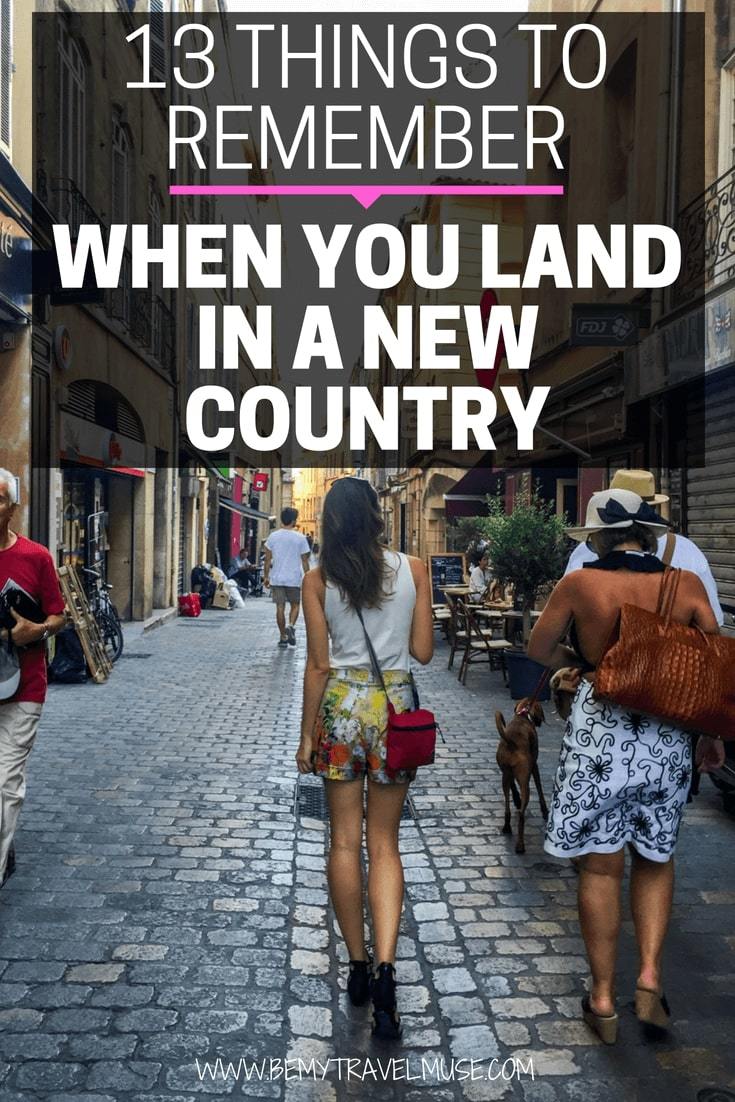
The first few moments that you spend in a new country can really set the tone for how your experience is going to be. Often, the arrivals hall of an airport is one of the most hectic parts of the journey – a place where it’s easy to fall victim to a scam, or alternatively, to set yourself up for success.
Over the years I’ve developed a formula that I absolutely must do when I land in a new country in order to avoid issues and reduce stress. I noticed other tourists not realizing how essential these things are, and often paying too much for taxis, not being connected from the moment they land, and getting overwhelmed.
So here are 13 things to always remember when you land in a new country so that you can start off on the right foot:
1. Know where you are staying at least for the first night.
Once upon a time, I would just land in a new country and go find accommodation that day. I remember my first day in Bangkok, fresh off of an international flight, I got in a taxi and made my way to Khao San Road and then walked into the first hostel that looked good. Little did I know that I could’ve saved money by taking the Skytrain and staying in a different part of town.
I hadn’t done much research before I arrived but now I know better. I usually do some research on booking.com or Airbnb (those links are both discount codes, by the way) and sort it by ratings of the location. I read the reviews and make sure it’s convenient to public transportation, if available. I’ve had much better experiences this way.

2. Know your transportation options
Before I leave home, I make sure that I know how much a taxi should cost from the airport to my accommodation. I Google it, then read up on which companies are trustworthy or if there’s another method, like a tuk tuk (common in Asia) or some kind of public transport, like a train in Europe, that I can take. In Bali, for example, I was once quoted 500,000 IDR (about $40) for a taxi ride only 30 minutes away. That seemed fishy to me so I ordered an Uber and paid 73,000 IDR (about $6) instead.
3. Google SIM cards
Right after I figure out my transportation options, I Google which SIM card is the best in the country. The first thing that comes up is almost always a forum where people discuss such things. Look at the most recent one that you can find and see what people say. Sometimes the airport is not the best place to buy a SIM card. In Lima, Peru, for example, you can only rent one, which seems silly. I decided to wait until I got to town to buy one in this case. Other times, they only offer terrible deals, like in Bali where they only sell ones with 12 GB of data for the equivalent of $45, which most people would never come close to using.
However in other airports like Colombo in Sri Lanka, or Chiang Mai in Thailand, there were multiple, reasonable options.

4. Download an offline map so that you know where you are going
Handle this while you’re still at home, too, and have strong enough internet to make it happen. I find that maps.me is a pretty good one, and it’s free! You can also download Google Maps offline for the country you’re visiting as back up, although for some reason it often doesn’t work properly for me.
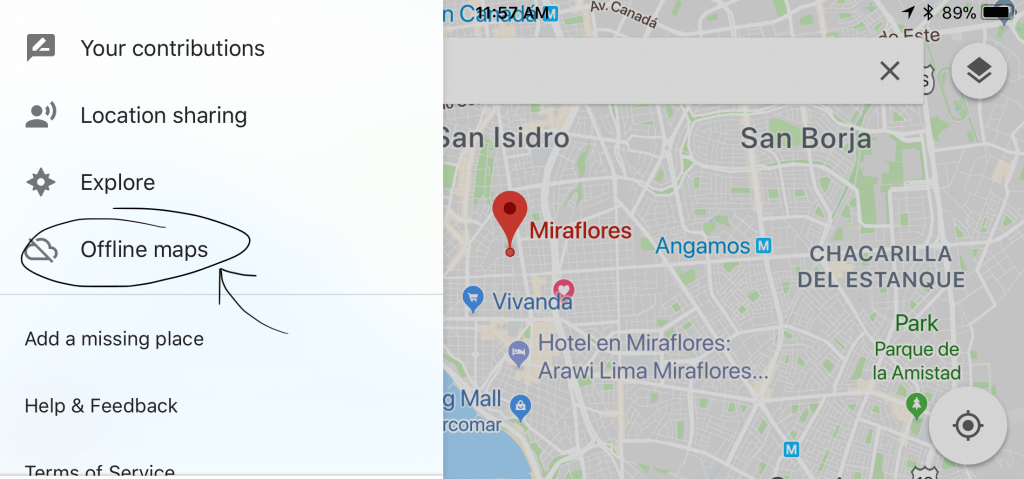
*Update: Massive thanks to Sarah for commenting below that she uploads her Google maps into maps.me. I didn’t even know that was possible. Boss move!
5. Check the current exchange rate
Upon landing, the first thing I do is open my GlobeConvert app (also free) and see what the conversion rate is from US dollars to that currency. I usually try to withdraw around $150-200 in cash. This will be enough to get me through at least the first few days.
6. Find an ATM
After I collect my baggage and make it through customs, the first thing I do is get some cash. The best way is to use an ATM card that doesn’t have any fees. Personally, I use Charles Schwab which even refunds ATM fees from the foreign ATM.
There is almost always at least one ATM in the arrivals hall, so I go for that. I’ve been advised in the past not to use airport ATMs since they’re sometimes fixed with scanners, but out of literally hundreds of airport ATMs that I’ve used, I’ve never had a problem.
7. Have a backup method for cash
Sometimes, the ATM will not work. This is rare, but it can happen, particularly in very small airports in developing countries. It’s always important to have some USD with you in denominations of $20 and in crisp, untorn bills. This way if you do need to change money, you’ll be able to. Money changers will never give you the best rate, particularly at an airport. Still, it’s better to leave with some cash than none.
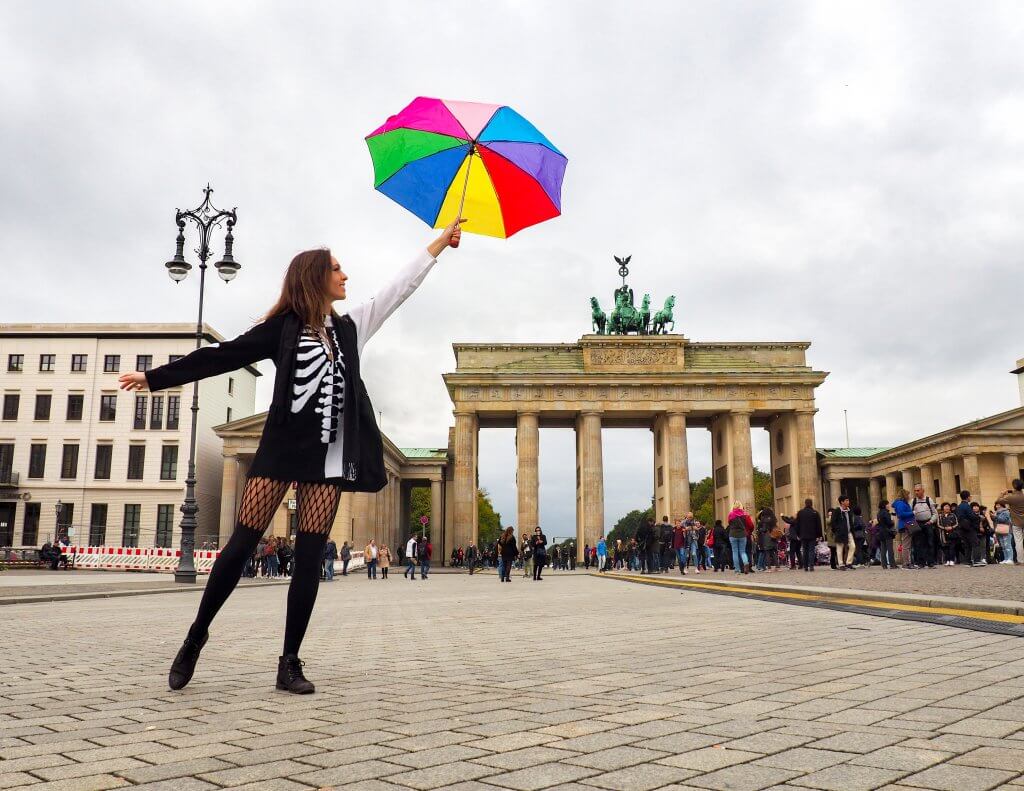
8. Buy that SIM card
Next, I will look for the stand where I can buy my SIM card. If possible, stay away from cards aimed at international visitors that give you a bunch of international air time for calls. With apps like Whatsapp, Facebook messenger, and FaceTime, you really don’t need anything other than data and a few local minutes in case you need to call your hotel or something like that. I usually just buy 1 to 3 GB of data and see how it goes. I’ll reload if needed at a shop in town. Note: you need an unlocked cell phone in order to do this.
Some people ask why I don’t just get an international plan with my home provider. If you are going on a short trip and you don’t have an unlocked phone, go for it. However, local SIM cards and data are almost always significantly cheaper than my European or US plan. For example, I paid $10 for 3 GB of data in Peru, and it costs me €20 for just 1GB in Germany!
9. Take a seat and have a coffee
Chances are good that you are probably exhausted coming off of a long, or even short, flight and this is what scammers are counting on. They hope that you’re going to be easily confused and you won’t really know what things should cost. Thankfully since you already did research on these topics, you won’t be a very easy target, but there’s still no reason to quickly rush out of the airport if you need a minute. Take a seat, get some water, get a tea or a coffee if you want to, and collect yourself before moving on.
I learned this tip from Wandering Earl back in 2012 and six years later it’s still golden.

10. In case you missed any of the previous steps, take this moment to connect to airport Wi-Fi and do some research
Sometimes I totally forget one of these steps and I will arrive at the airport not knowing what my transportation options are. Unfortunately, the information booths at the airport are often sponsored by companies and are really not your best resource.
For example, I once asked a lady at an information booth at Bangkok Sukhumvit airport how to get to Don Muang, the other airport in town, and she told me a $30 taxi. She seemed too eager and it made my alarm bells go off, so I kept walking and found a free bus. Ever since then I don’t rely on airport info booths anymore.
Your best resource is to use your 3G from your new SIM, or to connect to airport Wi-Fi and to do your research there. I would say 7 times out of 10 there is working Wi-Fi. The other 30% of the time, hopefully my other plan of getting a SIM card will have worked.
11. Use my selected transport method to get to my hotel
As a general rule, never get in the car with an unlicensed taxi, especially someone who comes up to you enthusiastically offering you a deal. If I possibly can, I use Uber, though many airports around the world have banned it.
Otherwise, I already know what a taxi should cost because I did my research, and I already know which company I should choose. So this step, which is normally where people run into trouble, should be a breeze for me. I will also know how close we are to my hotel on the journey, and whether or not the driver is taking the long way to run up the meter, because I am tracking it on my map.
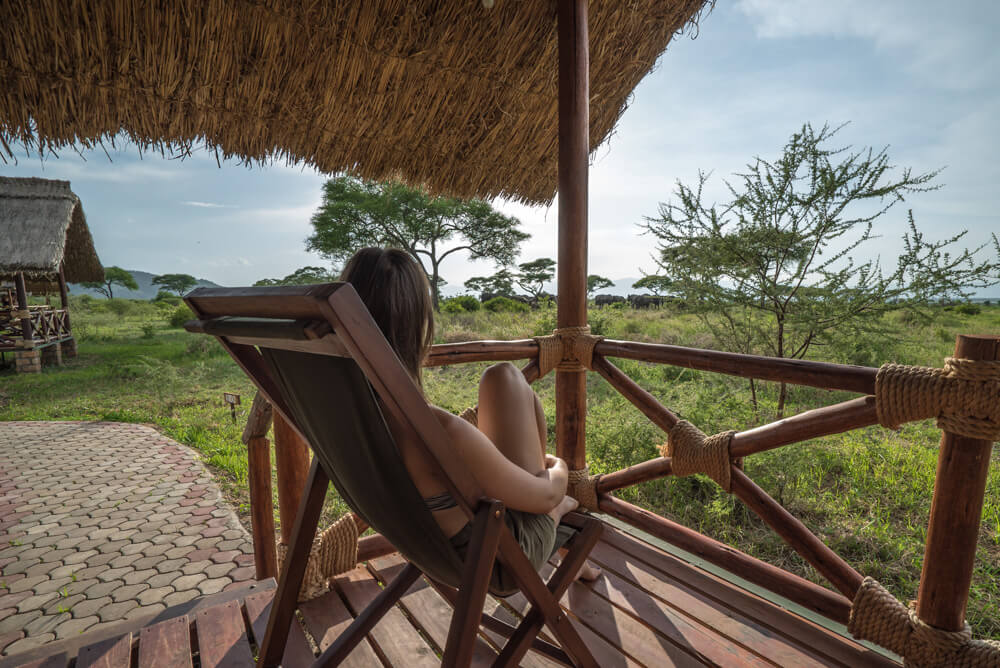
12. Check in, and ask the hotel staff for tips
Next check in, take a shower, and ask the hotel staff if there’s anything you need to know about staying safe in your new surroundings. Are there areas of town to avoid? Is it OK to take your phone out? Do they have a map you can use?
I also take this opportunity not to ask them where I should eat, but where they eat. I often get some nice local recommendations this way!
If there’s a language barrier or they’re just not very helpful, then my fallback plan is Googling again.
13. Take a walk
After I do my research, I usually spend the first day in a new place just walking around, getting a lay of the land, and seeing what is nearby. It’s a great way to settle into my new surroundings, discover little cafés, and just to be outside, which is so nice after being cooped up in a plane. I should already know which areas to avoid from step 12, and where to eat as well.
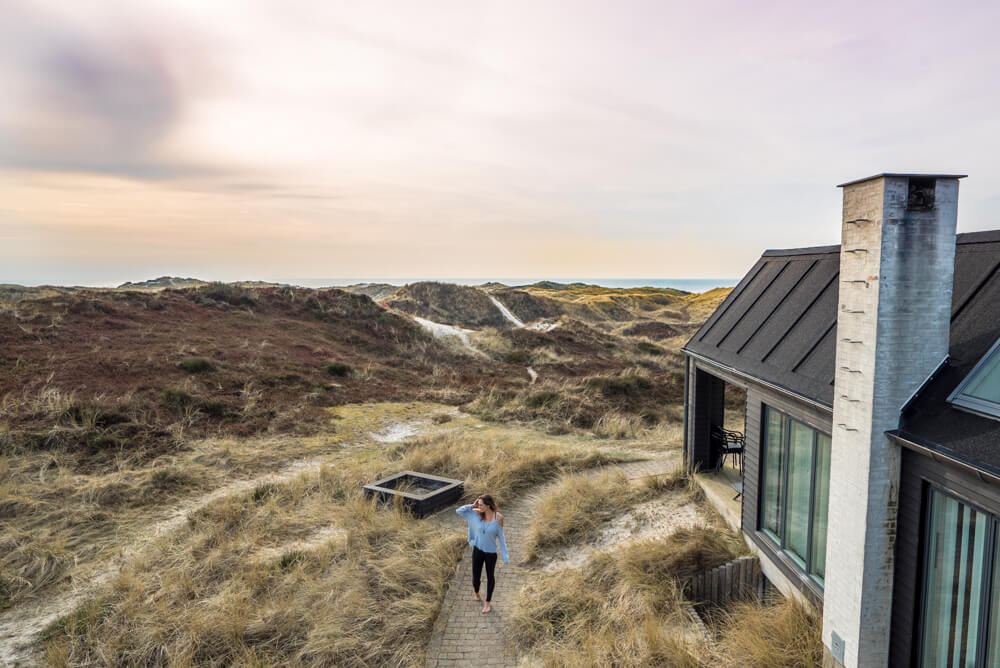
All of these things can set you up for a more relaxed and enjoyable trip. The biggest thing is going into your new surroundings with a bit more knowledge than your typical tourist. It makes all the difference.
The airport arrivals hall can be an incredibly exciting place, but also a disorienting and stressful place as well, but not when you’re prepared. These 13 tips will set you up for success every time!

Sarah says
Ha, I agree that Google offline maps doesn’t work great! Maps.me is better for offline, especially since you can save locations! What I do before a trip is to create a Google map with locations I want to remember (hotel, museums, a few restaurants) then export to a file and import to maps.me. I really like being able to see where different points of interest are in relation to each other.
Kristin says
I didn’t even know you could do that! Genius.
Sharon says
Hi Sarah, what type of file do you use and does maps.me tell you how to import a file? I’m leaving in a couple of days for Scotland and Northern Ireland. I’d like to try this.
Thank you
Sophia Williams says
All too true. Despite having traveled quite a bit, I still often find myself connecting to the airport wifi to do research the moment I arrive… I don’t understand myself sometimes.
Kristin says
Same. Despite knowing all this, sometimes I’m on the move going faster than I can keep track of and I’ll realize, oh yeah, I didn’t look into that yet!
Joanne says
Regarding Fx rates….i always check ahead as to the Fx rate and figure out an easy way to calculate approx what the conversion is so that I can quickly calculate it in my head. Eg. I was just In Korea on business and the rate was $1 CDn to 807 wan. Or conversely. 1000 wan was equivalent to 1.14 cdn.$. So in my head I can quickly estimate that I can divide by 1000 (drop 3 O’s) and add 10%. That gets me through pretty much anything without pulling out a calculator or phone. In the markets I can quickly figure out whether something is cheap or expensive etc. This has saved me so much grief. I check the Oanda travel cheat sheets for rates before I go and figure out the best quick way to to roughly convert rates.
Kristin says
It’s the best when it’s something easy like 1/10 🙂
Stefanie says
Thank you for this. I always do my research (at least on transport options), often even before i book my flight (no use to have a cheap flight if you can’t get to the airport without an expensive taxi at that time of the day).
Anyway, I actually did not know about maps.me and have often been frustrated with google maps, especially because walking routes are often not available when you doenload the offline maps.
I like the idea of having a coffee/tea first – I’ll do that next time I’m too eyhausted to think. 🙂
Kristin says
Maps.me is pretty good, although sometimes it really over or underestimates distances or time it will take to get somewhere. Better than nothing, though!
GG says
This is great advice, it is all about preparation and doing your research, indeed! Even if you are a spontaneous traveler, that doesn’t mean not to prepare for the essentials. I really need to follow step 9! Regarding ATMs, scanners, skimmers (for magnetic strips), shimmers (for chips) etc. I found this nice link that provides great advice on how to protect yourself from these scams as best as you can (with technologies it is always a battle between new protections and the cheaters trying to overcome them, but common sense precautions can be very helpful and save you). The link is: https://www.pcmag.com/article2/0,2817,2469560,00.asp
Hope it is helpful to everyone! As for the map discussion, I did not know about map.me, thanks! When I travel I am old school and obtain physical maps of where I want to go (if a difficult area, I print one out from online, like to have something tangible in my hands) and while I use the digital items, I also do weird things like screen capture maps and put the images in Word or some other file in case I can’t get connected. Now that I have a more advanced phone I might not do that anymore :).
BTW looking at the comments here it shows me how brilliantly smart the BMTM crowd is (like the map.me suggestion by Sarah and the mental math by Joanne)!
Kristin says
The audience is highly educated around here!
GG says
And also very “smart” in terms of being practical, using common sense, street smarts, and displaying wisdom. You and your audience have this in common.
Jub says
Woah Kristin, there’s actually a lot that goes into arriving at a destination huh. Stoked I do most of these…except the sim card…have been going without lately as it keeps me offline more when out exploring 🙂
Jub
Kristin says
Kind of, I mean it doesn’t have to be complicated, I just wanted to break it down part by part, but in total it takes maybe 20 minutes 🙂
Onyi says
It’s very important to research the city properly, have an offline map and spare cash handy. Great tips
Rebecca Cuningham says
Great advice for the novice and experienced traveler alike! Thanks.
Caitlin says
This article is SO helpful. For me, arrival is the biggest anxiety-inducing part of travel… I’m exhausted, overwhelmed, eager to get to my destination and start exploring, yet cautious about using the wrong taxi or ATM. I always wondered if following these steps made me less ~spontaneous~ but I’m glad to see an expert like you utilizes this checklist. Safe, savvy, AND spontaneous!
Also, shoutout to Sarah for the maps.me trick… definitely using that next time!
Kristin says
At some point spontaneity isn’t fun anymore when too much is left up to chance, so I’d say do whatever you need to do to feel good and prepared!
Yeah Sarah thanks again for that awesome tip!
Atul Chauhan says
Great article Kristin! As a traveler, planning itinerary is the best part of any travel addict. As a travel photographer connecting with locals has become the part of my job, It helps me in discovering an unplanned destination. The most annoying thing which I went through is failed bank and atm transaction, keeping some extra cash is a great advice.
Tony says
I will take exactly the same steps except I should do more number 9, I always want to get to my destination as quick as possible!!
Kristin says
Understandable!
Elizabeth Higgins says
Great post, Kristin! I have always traveled with a group – either my family or friends – and traveling on my own has always been scary to me. But it would be a dream to try and travel alone even for just a few days. Stepping on new land is definitely nerve-wracking as you really don’t know what to expect but meeting friendly locals and eating locally-made dishes is one of the best parts of traveling. Thanks for sharing this post, I’m sure a lot of people would be happy to read this!
Kristin says
Start close to home and go small if that helps 🙂
Bethany says
Great good! Obviously tried-and-true! I pretty much do all of these too except the SIM card…I tank up on information where so can find WiFi. And am excitrd to learn about maps.me! ???♂️